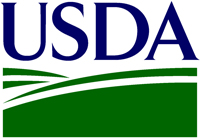 Researchers at the U.S. Department of Agriculture (USDA) have found a way to turn a by-product of ethanol production into a biodegradable form of kitty litter. This news release from the Agricultural Research Service (ARS) says USDA plant physiologist Steven Vaughn and his colleagues are using dried distiller’s grains, DDGs, as a starting material for a more environmentally friendly alternative to nonbiodegradable clay-based litters.
Researchers at the U.S. Department of Agriculture (USDA) have found a way to turn a by-product of ethanol production into a biodegradable form of kitty litter. This news release from the Agricultural Research Service (ARS) says USDA plant physiologist Steven Vaughn and his colleagues are using dried distiller’s grains, DDGs, as a starting material for a more environmentally friendly alternative to nonbiodegradable clay-based litters.
In preliminary studies, Vaughn’s group tested “x-DDGs.” These are DDGs that, after being used for ethanol production, are treated with one or more solvents to extract any remaining, potentially useful natural compounds.
The team’s laboratory experiments yielded a suggested formulation composed of the x-DDGs and three other compounds: glycerol, to prevent the litter from forming dust particles when poured or pawed; guar gum, to help the litter clump easily when wet; and a very small amount of copper sulfate, for odor control.
The resulting litter is highly absorbent, forms strong clumps that don’t crumble when scooped from the litter box, and provides significant odor control, according to Vaughn. He’s based at the Agricultural Research Service (ARS) National Center for Agricultural Utilization Research in Peoria, Ill. ARS is USDA’s chief intramural scientific research agency.
This isn’t the first time corn or grains have been looked at to use for environmentally friendly cat litter. But this is the first time DDGs have been thoroughly examined for this purpose.

